Schematic view of the inner structure of the Sun
Click on image for full size and a more detailed image of the interior of the Sun
NASA
The Solar Interior
To understand how our Sun works, it helps to imagine that the inside
of the Sun is made up of different layers, one inside the other.
The center of the Sun is called the core. It is the
region where the energy of the Sun is produced. We know that
the Sun produces energy because we feel hot on a summer day.
The Sun's energy travels outwards from the core.
The energy travels first through the
radiative zone, where particles of light carry the energy. It takes
millions of years for the energy to move to the next layer,
the convection zone.
At the
convection zone, energy travels faster. This time it is
the motion of the gases in the Sun that moves the energy outwards.
The gas at this layer mixes and bubbles, like the motion in a pot of boiling
water.This bubbling effect is seen on
the surface of the Sun.
We
can't see inside the Sun. So scientists use other diagnostics. These
diagnostics help us know what is inside the Sun.
You might also be interested in:
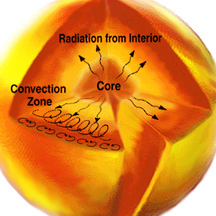
The convection zone is farther away from the Sun's core than the the radiative zone. At this point convective motions occur. This is like the motion of water that is boiling. These bubbling motions inside
...more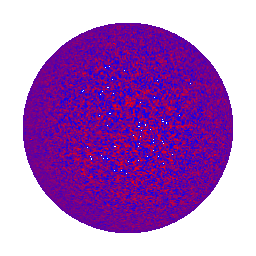
The Sun releases energy. This energy is made in the center of the Sun. But we can't see past the surface of the Sun. So how do we know how this energy is made? Well, scientists use diagnostics to figure
...more
Text for this level has not been written yet. Please see the "Intermediate" text for this page if you want to learn about this topic. To get to the "Intermediate" text, click on the blue "Intermediate"
...more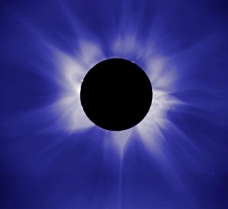
Scientists at the High Altitude Observatory (HAO) try to learn about the changes we see in the Sun over time. They also study how it affects the atmosphere of the Earth. There are four main areas of study
...more
The Sun acts like it has a big magnet in the middle of it. We call this the Sun's magnetic field. The Sun's magnetic field has a fancier name, the Interplanetary Magnetic Field (IMF). This just means that
...more
Have you ever seen an explosion before? Maybe you've seen a volcano explode on t.v. Or maybe you've seen a potato explode in the microwave because your mom forgot to poke holes in it. Well, explosions
...more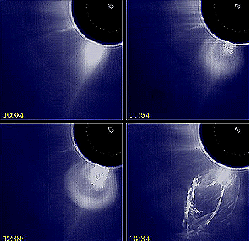
The Sun is not a quiet place, but one that exhibits sudden releases of energy. One of the most frequently observed events are solar flares: sudden, localized, transient increases in brightness that occur
...more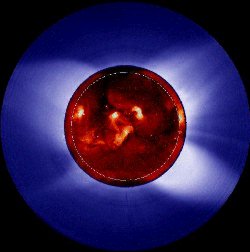
The visible solar atmosphere consists of three regions: the photosphere, the chromosphere, and the solar corona. Most of the visible (white) light comes from the photosphere, this is the part of the Sun
...more














